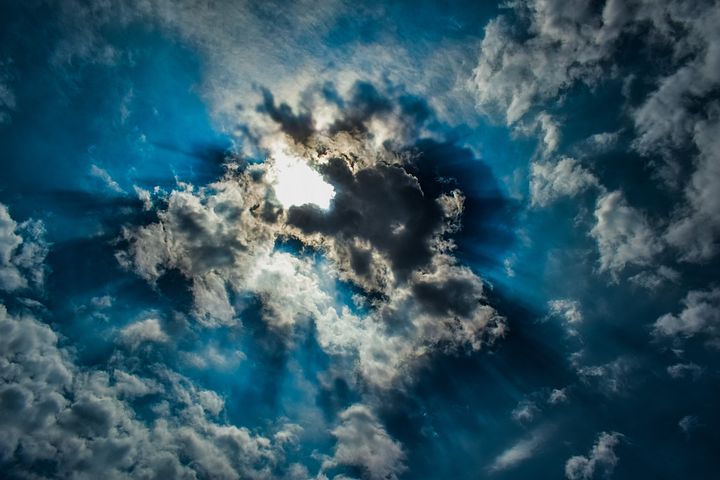There's nothing more fundamental to human persistence than the availability of oxygen, and yet we don't think much about how much oxygen we need, we just breathe it, but where this colorless gas in the air comes from that keeps life above Earth.
What is the great oxidation event?
The Earth's atmosphere has not always been as oxygen-rich as it is today, oxygen makes up 21% of the atmosphere now, but it represented only 0.001% of these levels within the first two billion years of Earth's history.
The oxygen on Earth has arguably been relatively rare in most of our planet's 4.6 billion-year history, but at some point Earth has undergone what scientists call the Great Oxidation Event. (Great Oxidation Event) "G.O.E" (GOE), where ocean microbes evolved to produce oxygen through photosynthesis, and oxygen accumulated for the first time in the Earth's atmosphere at this time, believed to have occurred between 2.5 and 2.3 billion years of Earth's history.
Later, Earth's larger plants caused the spectacular increase of oxygen in our atmosphere, and oxygen settled relatively high over the past 500 million years, and today almost half of the photosynthesis is done in the ocean and half on land.
How much does the ocean produce oxygen?
According to the National Oceanic and Atmospheric Administration (NOAA), scientists estimate that 50-80% of Earth's oxygen production comes from the ocean, where most of this production comes from oceanic plankton such as floating plants, algae and some bacteria that can do photosynthesis.
There is also a particular type of bacteria called "Prochlorococcus", the smallest light organism on Earth, alone producing up to 20% oxygen in our entire biosphere, a higher percentage than all tropical rainforests on Earth combined, although it is difficult to calculate the exact percentage of oxygen produced in the ocean because the quantities are constantly changing.
Scientists can use satellite imagery to estimate the rate of photosynthesis occurring in the ocean But satellite images cannot tell the whole story, The amount of plankton changes seasonally in response to changes in the amount of nutrients in water, temperature and other factors In addition, some studies have shown that the amount of oxygen in specific locations varies depending on the time of day and tide.
What about the future of oxygen in the atmosphere?
Burning billions of tons of carbon stored in fossil fuels today removes large amounts of oxygen from the atmosphere, thus reversing the pattern that led to high atmospheric oxygen in the first place, as the level of oxygen in the atmosphere decreases the higher the concentration of carbon dioxide.
But, according to the Conference site, as early as 1970, prominent geochemist WS Brooker realized that if we burn all known fossil fuel reserves, we would use less than 3% of our oxygen reservoir.
Also, if we want to cut or burn all forests and oxidize all the organic carbon stored in vegetation and soils around the world, it will only lead to a simple depletion of atmospheric oxygen.
If ocean and land photosynthesis stops producing oxygen, we can continue to breathe for thousands of years despite the other problems we will definitely face.
The expected reduction in atmospheric oxygen even in a worst-case scenario with widespread burning of fossil fuels and deforestation would be very small for the large air reservoir.
Models show that atmospheric oxygen content will see little change over the next 100,000 years in response to fossil fuel use.
Therefore, while there are many things to worry about in the future of our climate, the availability of oxygen for air-breathing organisms -- including that of humans -- is not one of them, but this does not apply to oxygen in the oceans.


Comments
Post a Comment